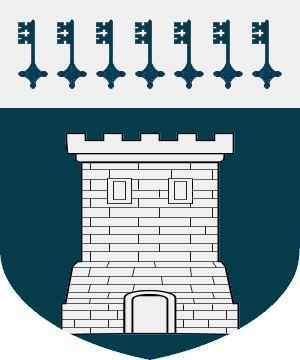Schola is the first among the Five Schools, counting both by age and prestige. The school began as a series of informal agreements between masters and mistresses of their respective magical arts around 650CE. By around 1090, the keep and castle walls were in place, and the seven houses had been founded.
Eclipse takes place during the 1924-1925 school year at Schola, and Chasing Legends explores one of Schola's ancient mysteries around winter solstice of 1926.
Staff
See Schola staff for a list of staff at different points. The general teaching staff includes:- Head of school and deputy head
- Seven Heads of House, responsible for students in their House.
- Teachers of Quadrivium and various magical arts (see below)
- Teachers of Trivium (usually part time teachers who live in the Schola village)
- A variety of other roles - library, infirmary, physical activities, housekeeping and cooking, grounds, etc.
Village
The Schola village is down the hill from the school and keep. It is home to a number of crafters whose work benefits from a remote magical location with a small population. The village has a bookshop, various shops, and three pubs. Two - The Lamb and the Badger and the Ragged Quill - are favoured by students in alternation, while the Tower and Bells is the choice for people who don't want to be around students.Calendar
Schola's year is on a trimester system.- Minerval Term: September to mid-December, followed by Solstice break
- Vestal Term: Mid January through mid March, followed by Equinox break
- Floralia Term: April through early June.
Courses
The core courses are based on the classical Trivium (rhetoric, grammar, and logic) and Quadrivium (arithmetic, geometry, music, and astronomy), expanding to cover the core magical skills. Few students study all of them, most pick a few to focus on. Students must demonstrate fluency for magical purposes in at least one magical language such as Latin, Attic Greek, Hebrew, Arabic (the magical dialect thereof), or Sanskrit, and it's often preferred for students to have competence in at least two. Many students also pick up some familiarity with common spoken languages (French and German are most common, depending on other interests.)First Year:
- Trivium (language, writing, rhetoric): required for everyone.
- Quadrivium, students must take at least two of Arithmetic, Geometry, Music, and Astronomy. Many students take 3 or 4.
- Natural History (Flora and Fauna)
- Society (history and customs) and Culture (arts, music history, etc.)
- Latin if not already fluent in at least one magical language.
Second and Third Year:
Students continue the previous courses (except that Natural History is no longer required) and add at least two of the following (but can take all of them if they would like a busy schedule and some hard work.)- Alchemy
- Incantation
- Materia
- Ritual
- Sympathetic magic
Fourth and Fifth Year
Students take at least two (and again, possibly more) applied methods classes. These have various prerequisites, demonstrated either by previous class participation or independent examination. (For example, Time and Place requires knowledge of Astronomy, and has a strong preference for Ritual competent students.)- Healing
- Flora (plants and materials)
- Martial
- Natural history
- Protective magics
- Time and Place (locational and chronological magics)
Activities
Each House has a bohort team, with a round robin of competitions that runs all through the year to produce a champion team. Talented players from across the seven teams form the school team that competes in the spring against the Apprentice League champions. There are lectures on different topics of interest for students most weeknights, a school chorus and chamber choir (as well as small instrumental ensembles), periodic theatrical productions and literary magazines, and a variety of independent student groups that ebb and flow based on interest.Houses
These serve both as residences, and also have their own specialised magics. Students are divided into their houses based on some arcane method known only to senior faculty at the school. (This is discussed in the first chapters of Eclipse, for the curious). The seven houses have particular areas of interest. Each student who successfully completes their schooling is entitled to wear a stone reflecting the house's colour (as noted), set in either a gold or silver medallion engraved with Schola's seal and symbols. Many use these not only as a means of quick identification of their fellows, but as an anchor for personal and professional magics.- Bear House is known for protection and defence. Colours are blue and silver with a blue stone.
- Boar House folk are full of courage and fierceness. Their colours are red and silver with a red stone.
- Fox House focuses on rulership and power twined with cunning and charisma. They wear a purple stone, and purple and gold are their colours.
- Horse House is full hard work and loyalty. Colours are green and gold, with a green stone.
- Owl House are respected for their knowledge especially of the magics of civilisation and the arts. Their colours are tawny brown and silver (like the owl of their name), with a white or silver stone.
- Salmon House folk are full of wild wisdom and physical skill. Their colours are black and gold, with a golden yellow stone.
- Seal House are known to be liminal and fey, often with a gift for magics of transformation. Their colours are light blue and black, with a light blue stone.
Societies
Schola also has societies, some more secret than others, though the name and existence of the longstanding societies are widely known.- Animus Mundi
- Dius Fidius
- Dwellers At The Forge
- Four Metals
- Many Are The Waters
- Society Of The White Horse
- The Nine Sisters



